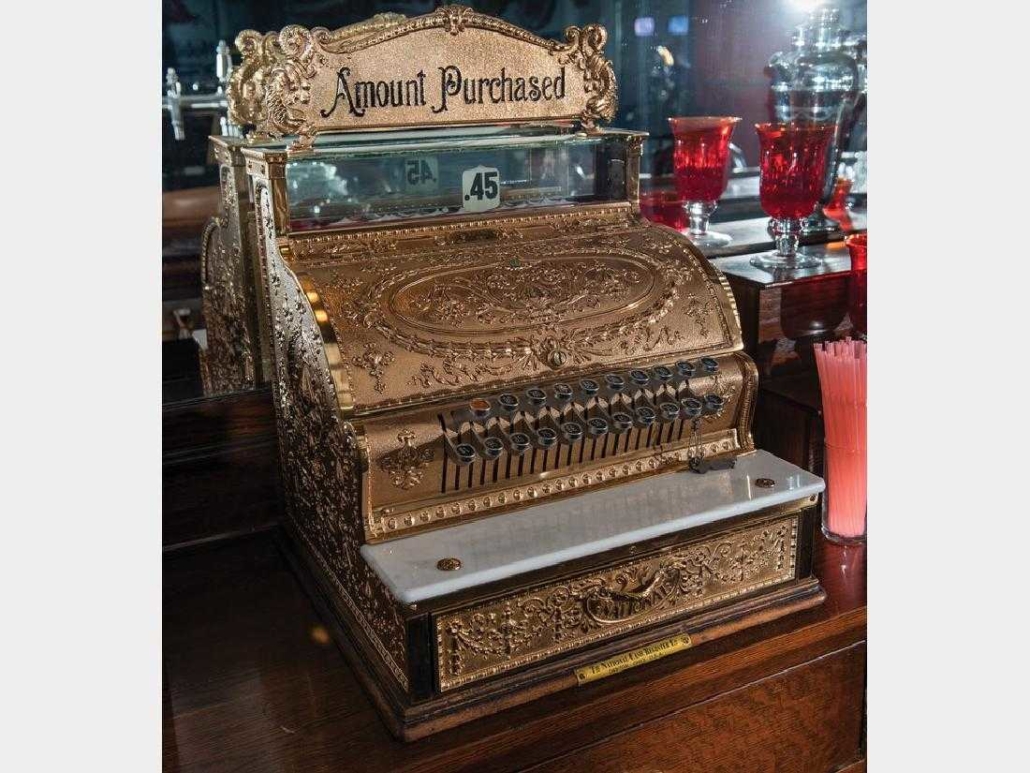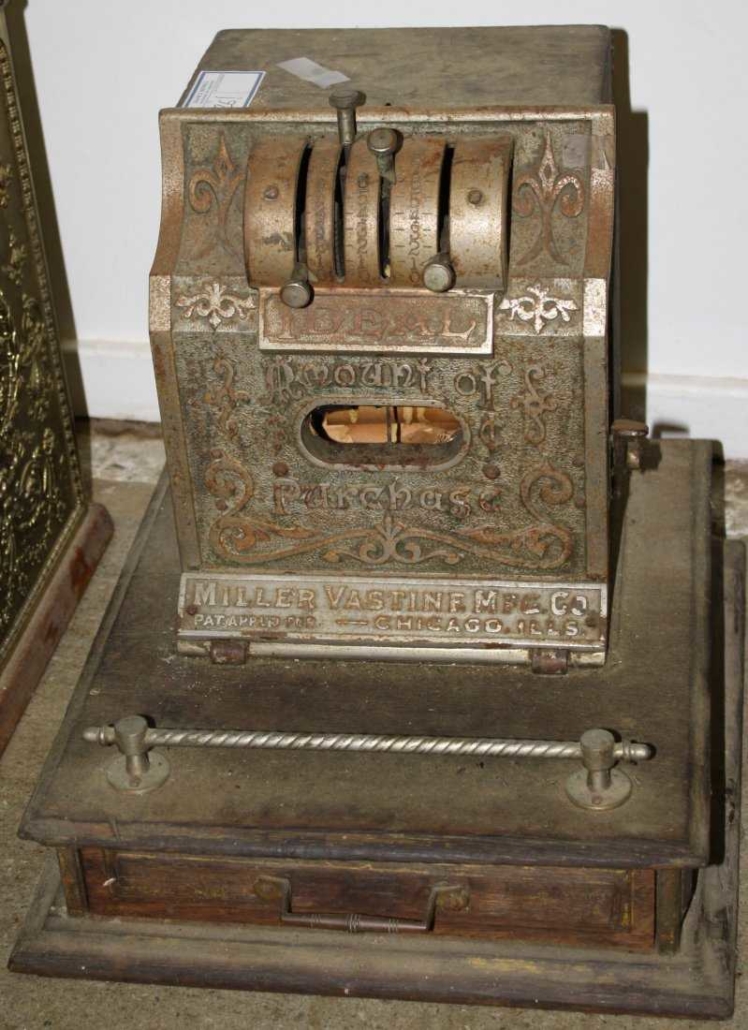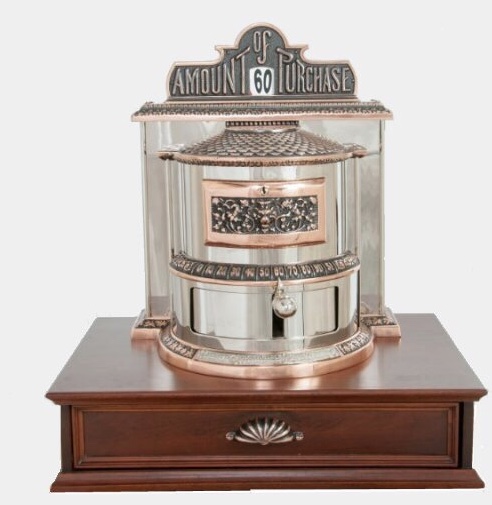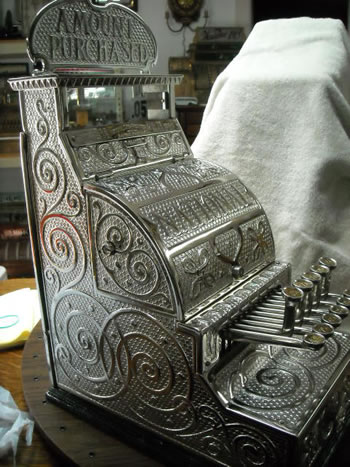
NEW YORK – Wood and brass cash registers may have gone out of style as computerized models took over, but for years they were the gold … er, brass, standard when it came to managing a business’ cash flow and receipts. Early and ornate examples are still highly prized by today’s collectors.
While the National Cash Register Company was the largest and most prolific manufacturer — NCR machines made up over 90 percent of the market during the late-19th and early 20th century — many other companies also got in on the action. At the height of popularity, there were over 200 different makers of cash registers.
“Many of these changed ownership and were the same machine with a different name. They also made very attractive registers, and these swelled the ranks of what are now ‘antique’ cash registers,” said Richard Witcher of Arnold, Maryland, who operates the website Dick and Joan’s Antiques. The site specializes in brass cash registers.
Credit for the first mechanical cash register generally has been given to an Ohio saloon/cafe owner, James Ritty, who, along with his brother John, patented the first cash register in November 1879. “They developed a number of different models, one of which was named ‘The Incorruptible Cashier,’” Witcher wrote on his website. While their cash register worked well, the company struggled and eventually sold to The National Manufacturing Co., later renamed the National Cash Register Company (NCR), in Springfield, Illinois. In 1906, engineer Charles Kettering helped design the first electric motor-powered cash register while working at NCR. Around 10 years later, while working at GM, Kettering would design the first electric self-starter for cars.

“NCR machines are not always the best or the holy grail. NCR is the most common brand in the antique marketplace because they dominated cash register sales between 1884 and 1916 (1916 is generally considered the end of the collectible cash register era),” said Leland Burns, M.D., a member of the Cash Register Collectors Club. “NCR did build outstanding machines, but some other companies back in the day built machines of high quality, while others did not. NCR sold approximately 95 percent of all cash registers between 1884 through 1916, producing approximately 1.5 million machines during that time frame. An estimated two percent of the machines survive to this day (approximately 30,000 machines).” Other collectible brands include Hallwood, Chicago, Ideal and Boston Cash Registers, he added.

“A general rule for value and desirability is, the scarcer the machine, and the more ornate the machine, the higher the value,” Burns said. “Cash registers that excel in ornate beauty and which are scarce or rare can easily sell for more than $10,000. As a general rule, candy-store-size registers [which are smaller and slimmer] are more desirable that mid-size registers.”
Some of the largest registers with the most features – such as the presence of a time clock, preferably in working order preferred; lights with original bulbs, electric top signs, and large tape reels also command significant sums of money, he added.

The earliest cash registers mostly had fancy wood cabinets, with either inlaid wood or heavily carved wood, Burns said. Metal cabinet registers came later and often were made with brass, bronze or nickel. Cabinet styles varied with different woods, finishes and decorative patterns, ranging from scrollwork to Renaissance and fleur-de-lis motifs.
“Although inlaid wooden registers were available from NCR through 1916, brass cabinet cash registers accounted for the majority of total sales beginning around 1890,” he said. “Many collectors go to the ends of the earth, seeking a scare and exceptionally beautiful early NCR wide-scroll model zero, from approximately 1890.”
Features and register styles also varied greatly in the number of keys it had, whether it was crank-operated or had lever action and if it used detail-adder or total-adder technology (the latter meaning every item entered into the register went into the same total). An NCR #4 model, for example, had 40 number keys, making it one of the largest detail-adder models built.

Collecting cash registers represents a passion not only for well-made objects but also a significant period in American invention, as the mechanical age was taking off at the same time that business technology was growing by leaps and bounds. Cash registers are taken for granted today, but when first introduced, they were as attractive as they were functional, making them objets d’art on mercantile and drug store counters across America.
# # #


